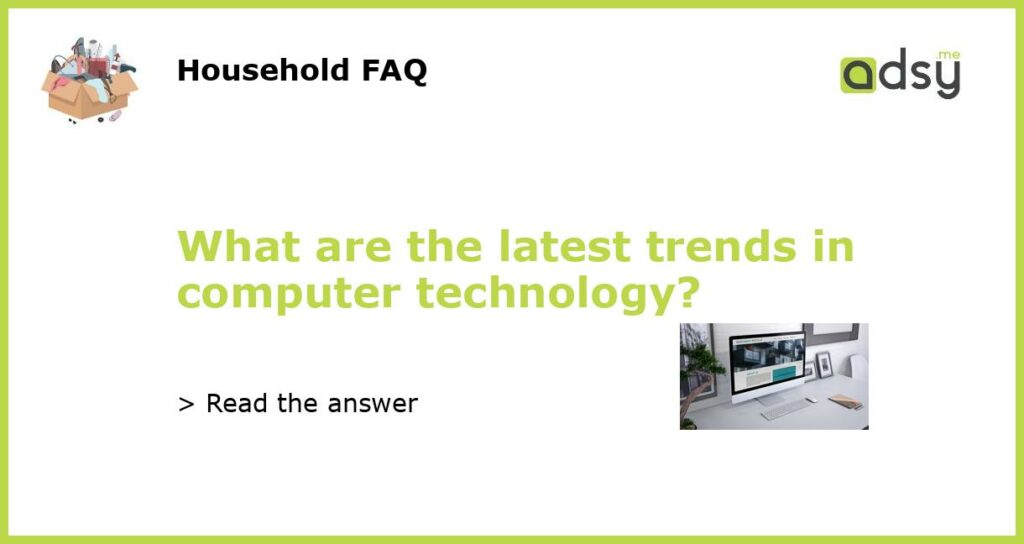The Rise of Artificial Intelligence
Artificial Intelligence (AI) has been a buzzword in the tech industry for quite some time now, but the latest trends indicate that it is here to stay. AI refers to the simulation of human intelligence in machines that are programmed to think and learn like humans. From virtual assistants like Siri and Alexa to self-driving cars, AI is becoming an integral part of our daily lives. With advancements in machine learning algorithms and neural networks, computers are now capable of performing tasks that were once thought to be exclusively human, such as recognizing patterns, making decisions, and even creating art.
The Internet of Things (IoT)
The Internet of Things (IoT) is the network of physical devices, vehicles, appliances, and other objects embedded with sensors, software, and network connectivity that enables these objects to connect and exchange data. IoT has revolutionized various industries by allowing devices to communicate with each other and collect and analyze data in real-time. For example, in the healthcare industry, IoT devices can monitor patients’ vital signs and send alerts to healthcare providers in case of any abnormalities. In the manufacturing industry, IoT can optimize production processes by allowing machines to communicate with each other and make real-time adjustments. The possibilities are endless, and as more and more devices become connected, the IoT is only set to grow further.
Quantum Computing
Quantum computing is an area of computing technology focused on developing computer systems that use quantum bits or qubits. Unlike classical computers that use binary digits or bits (0s and 1s), quantum computers use a different unit of information called qubits, which can exist in both states simultaneously, thanks to the principles of quantum mechanics. This inherent parallelism allows quantum computers to perform certain types of calculations much faster than classical computers. While quantum computing is still in its early stages and faces many technical challenges, it holds immense promise for tackling complex problems that are currently intractable for classical computers, such as optimizing logistics, simulating molecular structures, and breaking encryption.
Blockchain Technology
Blockchain technology gained prominence with the rise of cryptocurrencies like Bitcoin, but its potential goes far beyond digital currencies. A blockchain is a decentralized and distributed digital ledger that records transactions across multiple computers. Each transaction, or block, in the chain is linked to the previous one, forming a secure and tamper-evident record. This technology has the potential to revolutionize various industries by providing transparency, security, and immutability. For example, in supply chain management, blockchain can be used to track the movement of goods from the point of origin to the final destination, ensuring authenticity and reducing fraud. In the financial industry, blockchain can enable faster and more secure cross-border transactions. As the technology matures and more use cases are explored, blockchain is expected to become an integral part of various sectors.
Augmented and Virtual Reality
Virtual Reality (VR) and Augmented Reality (AR) have gained significant traction in recent years, thanks to advancements in hardware, software, and content creation. VR immerses users in a completely virtual environment, typically through the use of a headset, while AR overlays digital information onto the real world. These technologies have already had a significant impact on industries such as gaming, entertainment, and training. VR gaming allows players to fully immerse themselves in virtual worlds, while AR has been used in applications like furniture shopping, where users can virtually place furniture in their homes before making a purchase. With the continued development of VR and AR hardware and software, these technologies are expected to expand into areas such as healthcare, education, and remote collaboration, transforming the way we interact with the digital world.






